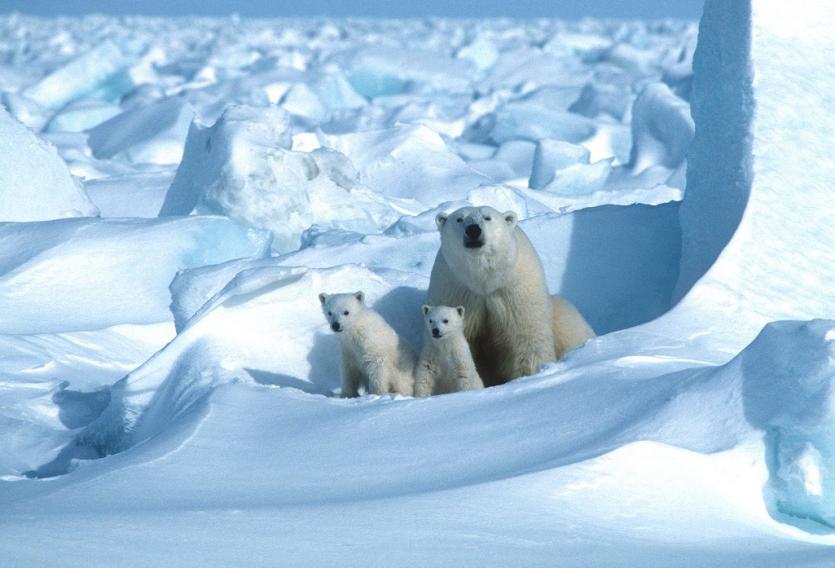A polar bear with its cubs in Alaska in 1985. Photo:Getty
Stalled study finds that Polar Bears are under threat from drilling operation plans
By Patryk Krych | The World Daily | OCTOBER 3rd 2020
A study, which for a long time had been stalled by the Trump administration, found that oil drilling in the Arctic US regions will pose a severe threat to the already endangered polar bear populations, likely putting them at risk.
The study was stalled by the administration for months, having been performed by government scientists, and was finally released on Friday. According to documents obtained by The Washington Post, it was a top official at the Interior Department who held some responsibility for the delay. The results of the study reveal the effects of oil drilling on the polar bear population, already struggling under climate change, results that would likely hinder the planned drilling operations.
Furthermore, it’s been known that the study had been ready for release for the last three months. It’s also been noted that despite having been approved for release, U.S. Geological Survey Director James Reilly had also gone and delayed the study – which focuses on female polar bears and the numbers in which they give birth near the Southern Beaufort Sea: an area that overlaps with the administration-chosen site for drilling and resource industrialisation.
A $3 billion drilling project on the National Petroleum Reserve in Alaska, where polar bears are known to roam and make their dens according to findings of Reilly’s study, is on the verge of being signed off. Many were baffled by Reilly’s decision to hold back his findings, believing it to be a move meant to support the drilling operations. On Thursday, however, he stated in an email that whilst It’s true that he held back the study’s release, it wasn’t correct to state that he held it back “solely to benefit the oil and gas industry.”
He wrote on, stating that “It is, however, an influential paper, and it will have potential regulatory and policy impacts. It is therefore important that I understand — and I am satisfied with — the science used in the report.”
The published report had found that “The long-term persistence of polar bears (Ursus maritimus) is threatened by sea-ice loss due to climate change, which is concurrently providing an opportunity in the Arctic for increased anthropogenic activities including natural resource extraction.”
What this reveals is that as the sea ice in the Arctic shrinks, polar bear populations find themselves in greater danger, all whilst expanding the horizons for oil drilling, and expansion of the industry. The U.S. Fish and Wildlife Service spent three months looking to have the report released. Polar bears are protected by federal laws, thus, the drilling cannot go on without the report’s affirming findings.






